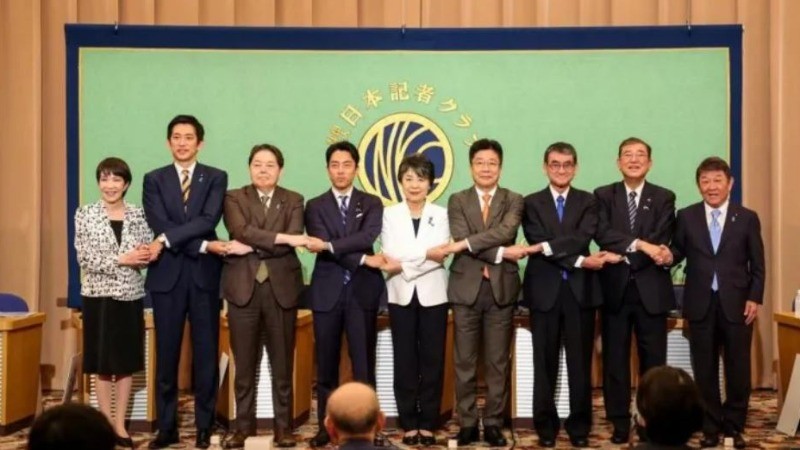
Japan's ruling party, the Liberal Democratic Party (LDP), is set to elect a new leader today, facing critical issues such as an aging population and rising military threats. This leadership election comes at a pivotal moment as the country aims to move away from heavy reliance on central bank support and speed up necessary reforms.
A total of nine candidates are vying for the LDP presidency. Outgoing Prime Minister Fumio Kishida announced last month that he would not seek a second term due to declining approval ratings linked to a party scandal and ongoing inflation. The winner of the LDP election is expected to be confirmed as prime minister by parliament on October 1.
Among the front-runners is Sanae Takaichi, who believes Japan's economy still requires aggressive stimulus measures. If elected, Takaichi would make history as Japan's first female prime minister.
Shinjiro Koizumi, at 43, could become the youngest postwar prime minister. Although he lacks extensive government experience, he has campaigned on a platform of deregulation aimed at fostering new business sectors like ride-sharing.
Shigeru Ishiba has proposed forming an "Asian NATO" to counter threats from China and North Korea. He also aims to revitalize Japan's rural areas by providing incentives for young people to remain in these regions instead of moving to major cities.
Former Prime Minister Taro Aso is reportedly backing Takaichi in the election. Meanwhile, the yen has continued to weaken against the dollar, trading at approximately 145.52 per dollar, down from 144.80 earlier in the day. Akira Moroga, chief market strategist at Aozora Bank, commented, “The depreciation of the yen is a move in preparation for a Takaichi victory in the LDP leader election.”
Positive signs of economic recovery in Japan, such as wage growth and rising prices, have revived interest in the country as a global investment destination. However, the new prime minister will face deep-rooted challenges, including a shrinking workforce, low productivity, and economic disparities. Additionally, growing military threats from China, Russia, and North Korea will require careful attention from the new leadership.
As national elections loom within the year, candidates are making public proposals aimed at boosting incomes and economic growth. Most have promised to implement an economic stimulus package quickly, with Takaichi advocating for the Bank of Japan to pause its normalization efforts to support growth.
Another pressing concern for the new leader will be maintaining a strong relationship with the United States, especially with the upcoming presidential election in November. The US is Japan’s primary security ally, hosting around 55,000 troops on Japanese soil.
While all candidates have emphasized strengthening the US alliance, recent tensions have arisen from Biden's actions to block Nippon Steel Corp.’s acquisition of United States Steel Corp. Some candidates, including Takaichi and Koizumi, have suggested that US domestic politics may influence this situation.
The candidates have also reacted strongly to recent incidents involving China, particularly the fatal stabbing of a Japanese schoolboy and unauthorized entry of Chinese military aircraft into Japanese airspace. All candidates have called for thorough investigations and measures to safeguard Japanese citizens.
Debates among the candidates have revealed varying positions on social issues, such as whether to allow married couples to keep separate surnames, a significant topic in discussions about diversity in Japan. While Koizumi and Ishiba support the change, Takaichi opposes it.
Despite the numerous challenges facing Japan, calls for party reform have emerged as a crucial theme following revelations about secret payments to lawmakers involved in factional groups. The current dynamics have resulted in one of the most competitive leadership races for the LDP in decades.